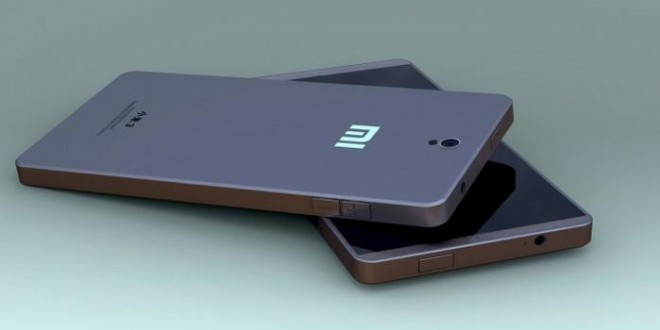The flagship Xiaomi Mi 4's design borrows liberally from Apple's iPhone, but it also possesses plenty of features that let it stand on its own, chief of which are its powerful hardware.
The Mi 4's is a steal no matter how you look at it. Its unlocked price in China is 1,999RMB (which converts to $320, £190, or AU$345) for the 16GB model, and 2,499RMB (which converts to $400, £235, or AU$430) for the 64GB.
The Mi 4 is limited to China right now, though we expect Xiaomi to soon sell the phone in other markets it currently serves, such as Taiwan, Hong Kong, Singapore, Malaysia, India and the Philippines. Other countries will have to rely on importers.
Also, while the phone will eventually come with 4G capability that works outside China, a revised 4G model isn't due until the end of the year. If you choose to import the phone before then, your Mi 4 will operate only on 3G networks.
Design, display and specs
At first glance, the Xiaomi Mi 4 bears a striking resemblance to the design of the iPhone -- especially the stainless steel banding around the sides. The company has obviously owes a good deal to Apple, and the white plastic inserts in the frame are definitely familiar.
If you look at the front speaker too, you can see another place where the Mi 4's designers got their visual cues. That said, there are distinctly different elements that make the Xiaomi Mi 4 design's unique.The rear is plastic, but you can remove it with a suction cup and swap in a different design. Xiaomi has covers ranging from wood to something that resembles marble.
I quite like the feel of the phone. It sits comfortably in my hand, though the edges of the steel frame can are a little sharp. Despite the glossy plastic backing, the handset has quite a premium feel to it thanks to this metal edging. The power and volume rockers are on the right, and are easy to reach without any strenuous finger stretching.
The phone is powered by Qualcomm's Snapdragon 801 processor, clocked at 2.5GHz. That's similar to what you'll find in other high-end flagships, so no surprises here. Other specs include 3GB RAM and either 16GB or 64GB of onboard storage, but there's no microSD for expandability. Knowing Xiaomi's usual modus operandi, it's likely that only the 16GB version will retail outside of China.
The phone comes with a 3,080mAh battery, but the bad news is that it's not removable even if you manage to get the back cover off.
The Mi 4 has a 5-inch display with a full HD resolution (1,920x1,080 pixels). According to Xiaomi, it has acolor gamut accuracy of 84 percent, 17 percent higher than the Iphone 5s. I'm no expert on judging color accuracy, but I can tell you its colors look vibrant and lively and the screen is bright enough to use outdoors in bright sunlight.
As a high-end device, the Mi 4 comes with all the usual connectivity options, such as Wi-Fi and Bluetooth 4.0. 4G is only available on the China Mobile network (TDD-LTE), which unfortunately does not work in most other countries that use the FDD-LTE standard. An FDD-LTE model is due at the end of the year, and possibly earlier.
Software features
The Mi 4 runs Android 4.4.2 (KitKat) but with the company's own MIUI skin. Xiaomi has made substantial tweaks to the Android operating system and MIUI has a whole suite of features you don't normally see on Android.
For one, instead of an app drawer, MIUI puts every app on the home screen just like iOS. While I would prefer my screens to be less cluttered with apps (especially if you have a lot), those switching over from Apple will find this a more simple transition.
One of the best things about MIUI is the ability to customize how it looks. You can easily load up the Themes app to switch things around. There are a whole bunch of free and paid themes you can download, and if you're feeling particularly fruit-flavoured, there's also the option to download an iOS 7skin that even has the background parallax effect.
Camera
One of the best things about the Mi 4 is its camera. The shutter is snappy and MIUI has built-in manual controls that let you adjust exposure and shutter speeds. If you don't need that, the default auto mode is good enough as well.
In my tests, the phone was capable of taking really good pictures even in low-light conditions. I'm really pretty impressed with it, especially when I used manual controls to shoot fireworks.
Performance
As you'd expect from a high-end device, the Mi 4 delivered slick performance comparable to other top-notch mobiles.
Interestingly, when I started the Quadrant benchmark, the phone asked if I wanted to use a high-performance mode or stick to the current balanced mode. It scored 24,055 in high-performance and 15,954 in balanced. On LinPack it obtained a blazing 901.961 MFLOPs over 0.19 seconds.
Call quality
Calls came through crisp and clear, and the person on the other end reported no issues either. The speaker volume feels just about right. While it isn't the loudest, you likely won't be missing any calls while the phone is in your pocket.
Battery life
In normal use, the 3,080mAh battery managed to last a day and a half, though I suspect with the LTE model, this should fall to a day. We're still testing the battery life with our CNET Labs Video app, so check back later for the official result.
 |
| Screen Shot of MI4 |
Pricing is currently unavailable.















